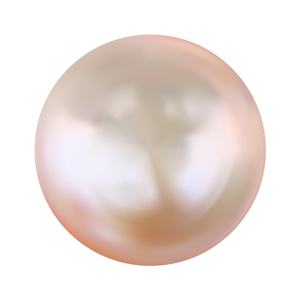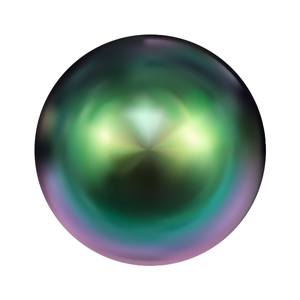pearl
Pearl, a gem of timeless elegance, derives its name from the Old French word "perle," which evolved from the Latin "perna," meaning "leg," referring to the leg-shaped bivalve mollusc that often produces pearls. Unlike other gemstones, pearls are organic in nature, formed within the soft tissue of certain molluscs.
The chemistry of pearls is primarily composed of calcium carbonate, in the form of aragonite and calcite crystals, layered in concentric rings. These layers create the iridescent lustre that pearls are known for.
Pearls are created through a fascinating process when an irritant, such as a grain of sand, invades the mollusc's shell. In response, the mollusc secretes layers of nacre around the irritant, gradually forming the pearl.
Notably, pearls can be found in both freshwater and saltwater molluscs, with famous sources including the Persian Gulf, the South Pacific, and China. Their unique formation, coupled with their timeless beauty, has made pearls symbols of purity and grace throughout history.
Click on the terms in the table below to discover their meaning
Click on the terms in the table below to discover their meaning
| Name | Pearl |
|---|---|
| Category | Organic |
| Chemical Formula |
CaCO3 |
| IMA Symbol | Not approved |
| Crystal System | Orthorhombic |
| Crystal Habit | Microcrystalline |
| Twinning | None (though pearls may merge together as they grow forming a baroque pearl) |
| Cleavage | None |
| Fracture | Uneven |
| Tenacity | Brittle |
| Hardness (Moh's Scale) |
2.5 - 4.5 |
| Specific Gravity | 2.60 - 2.85 |
| Diaphaneity | Translucent to opaque |
| Colour | White, silver, cream, yellow, golden, orange, pink, red, purple, blue, green, brown, grey, black; commonly display pearlescence; may display iridescence |
| Streak | White |
| Lustre | Pearly |
| Optical Class | Uniaxial (-) or Biaxial (-) |
| Refractive index | n = 1.520 - 1.690 |
| Birefringence | δ = 0.155 - 0.156 |
| Dispersion | None |
| Pleochroism | Absent |
| Clarity | Has own grading system based on lustre, surface quality, shape, size, colour, and nacre thickness |
| Notable Varieties | Freshwater Pearls, South Sea Pearls, Tahitian Pearls, Akoya Pearls, Conach Pearls, Melo Melo Pearls, Abalone Pearls, Quahog Pearls, Tennessee River Pearls |
References
Geology Science. (2018). Pearl. Retrieved from Geology Science: https://
Schumann, W. (2013). Gemstones of the World (17th ed.). (D. Shea, & N. Shea, Trans.) New York: Stirling Publishing Company.
The Gemology Project. (2009, June 1). Pearl. Retrieved from The Gemology Project: http://


